You’re thinking of building a pressure-treated wood deck. But before you start nailing boards to your joists, you might be wondering: how long does a pressure-treated wood deck last? The answer, unfortunately, is not as straightforward as you might hope.
A pressure-treated wood deck can last a long time if it is properly maintained. But how long does a pressure-treated wood deck last? This is a question that many people ask when they are thinking about building a new deck.
While the answer may vary depending on the individual, some general tips can help you prolong the life of your wood deck pressure-treated. In this blog, we guide you about the average lifespan of pressure-treated wood decks and how you can make yours last even longer!
What is the Expected Life Span of a Pressure-Treated Wood Deck?
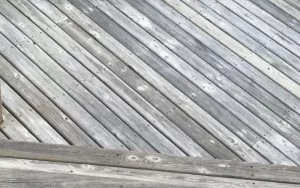
Most people have heard of pressure-treated wood, but they may not know exactly what it is. Pressure-treated wood is lumber infused with chemicals to help it resist rot, insects, and weathering. This type of wood is often used for outdoor projects like decks, porches, and playgrounds.
Pressure-treated wood is a popular choice for decks because it’s durable and long-lasting.
Because pressure-treated wood is so durable, it has a longer lifespan than other types of lumber. In fact, pressure-treated wood can last up to 40 years if it is properly maintained!
However, the average lifespan of a pressure-treated wood deck is 15-20 years. But with proper care and maintenance, your deck can last even longer!
What Factors Influence the Duration of a Wood Deck Treated at a High Pressure?
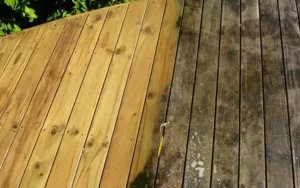
When trying to determine how long your pressure-treated wood deck will last, there are a few factors that you need to take into account. These include:
The type of pressure-treated wood:
There are two types of pressure-treated wood on the market today: CCA and ACQ.
- CCA (Chromated copper arsenate) is the most common type of pressure-treated wood.
- ACQ (alkaline copper quat) is a newer type of pressure-treated wood that is less toxic than CCA.
When choosing pressure-treated wood for your deck, be sure to choose the one that is right for your needs.
The climate:
The climate plays a big role in how long a pressure-treated wood deck will last.
If the deck is in a hot and humid climate, it may not last as long as it would in a cooler climate. The same is true for a cold climate. In a colder climate, the deck may not last as long in a colder climate because the wood may crack from the cold weather.
Pressure-treated wood is also more durable than non-pressure-treated wood. The pressure-treated wood is excellent for decks in regions with high humidity and significant precipitation.
The amount of sunlight:
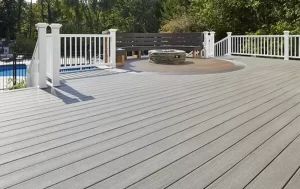
Another factor that can influence the lifespan of your pressure-treated wood deck is the amount of sunlight it receives. When pressure-treated wood is exposed to direct sunlight, it will start to fade and turn gray. If you want your deck to last a long time, choosing a location that gets partial sun or shade is important.
The amount of traffic:

The amount of traffic your deck gets will also affect how long it lasts. A deck that gets a lot of foot traffic will not last as long as a deck that gets less traffic. If you have a deck that gets a lot of foot traffic, it’s important to choose pressure-treated wood rated for heavy traffic.
The type of soil:
Another factor to consider is the soil your deck is built on.
- If the soil is too sandy, it can cause the deck to shift and settle over time.
- If the soil is too clay-like, it can cause the deck to crack and heave.
It’s important to choose a pressure-treated wood that is rated for your soil type.
Proper care and maintenance:
One of the most important factors in determining how long your pressure-treated deck will last is proper care and maintenance. It’s important to clean your deck regularly to remove dirt, leaves, and other debris.
Proper cleaning will help to extend the lifespan of your deck. Cleaning involves using a mild soap and water solution. You can also use a pressure washer to clean your deck, but be sure to use the low setting, so you don’t damage the wood.
Should you Paint or Seal your Pressure-treated Wood Deck?
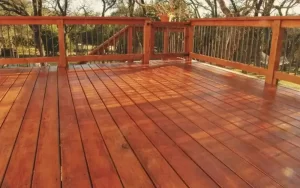
You just had a beautiful pressure-treated wood deck, and now you want to protect your investment. You’ve heard that painting or sealing the deck will prolong its life, but you’re unsure which route to go.
Both have their benefits, so it comes down to personal preference. If you want a low-maintenance option, sealing is the way to go. You’ll still need to clean your deck regularly, but you won’t have to worry about chipping or fading paint.
On the other hand, painting provides a more finished look and allows you to personalize your space. If you opt for this route, use high-quality paint and apply several coats for optimal protection.
Ultimately, whether to paint or seal your deck comes down to what you’re looking for in terms of appearance and maintenance.
Is your Pressure-treated Wood Deck Rotting?
Have you ever gone to sit on your beautiful pressure-treated wood deck only to have the whole thing collapse beneath you? Or maybe you’ve noticed that the boards are starting to warp and rot, and you’re wondering why. It’s a common problem with pressure-treated wood decks, and it’s happening for a few different reasons.
First, the chemicals used to treat the wood are designed to repel water, but over time they break down and absorb water instead. This causes the wood to swell and eventually warp and rot.
In addition, the chemicals make the wood more susceptible to fungal growth, which can also lead to rot. So if you’re thinking about building a wood deck, be warned – it may not be as long-lasting as you hope, but proper care and maintenance can help to extend its lifespan.
Will vinegar stop wood rot?
Vinegar is a common household product used for cleaning, cooking, and gardening. But did you know that it can also be used to stop wood rot?
Wood rot is caused by a fungus that breaks down the cellulose in wood, and vinegar is an effective fungicide. Simply mix equal parts vinegar and water in a spray bottle and apply it to the affected area. For best results, use white vinegar rather than apple cider or other vinegar.
You can also use vinegar to clean your deck regularly. This will help to prevent the build-up of dirt, leaves, and other debris that can lead to rot. Simply mix a solution of vinegar and water in a bucket and use it to scrub your deck clean.
So if you’re looking for a natural way to stop wood rot, give vinegar a try. You may be surprised at how well it works.
Frequently Asked Questions:
Q. How often should I clean my pressure-treated wood deck?
A. That also depends on a few things, but as a general rule of thumb, you should aim to clean your deck at least once a year. This will help to keep it looking its best and prevent any build-up of dirt or grime that could potentially damage the wood.
If you live in an area with a lot of pollen or other airborne debris, you may need to clean your deck more often. And if you have any pets that use the deck, you’ll definitely want to make sure you give it a good cleaning regularly!
Q. What’s the best way to clean my pressure-treated wood deck?
A. The best way to clean your deck will depend on what type of cleaner you use. If you opt for a chemical cleaner, follow the instructions carefully and always wear gloves and a mask to protect yourself from inhaling any fumes.
You can also use a pressure washer to clean your deck, but be careful not to damage the wood. If you’re unsure how to use a pressure washer, it’s best to hire a professional.
Conclusion:
A pressure-treated wood deck can last many years if properly taken care of. The duration of a wood deck treated at high pressure will be influenced by various factors, such as the type of lumber used, the climate, and how well it is maintained. It is important to keep in mind that proper maintenance includes regular cleaning and sealing. Be sure to visit our blog regularly for more tips on taking care of your outdoor spaces!

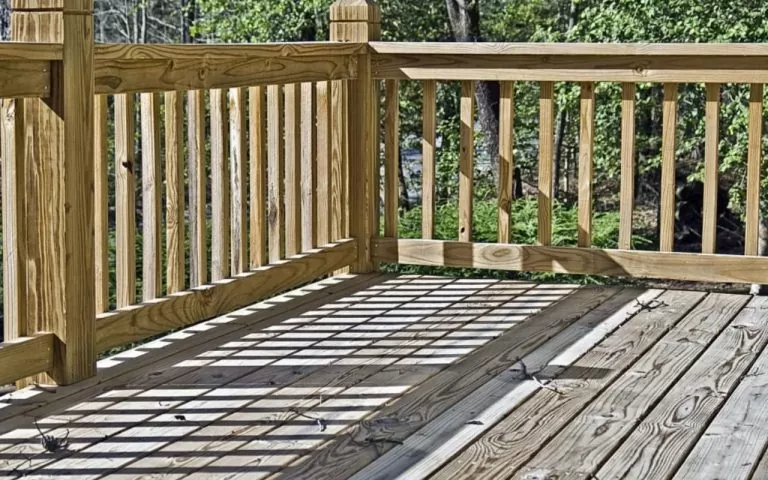
4 thoughts on “How Long Does A Wood Deck Last Without Pressure Treated?”